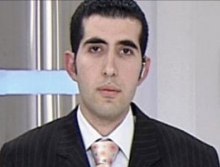 BEIRUT, Lebanon: A Lebanese judge filed charges Wednesday against three journalists accused of breaking into the Beirut apartment of a witness in the assassination of former Premier Rafik Hariri, a judicial official said.Investigating Judge Elias Eid filed the charges against reporter Firas Hatoum, who works with the local New-TV station, as well as a cameraman and assistant, for breaking into and "tampering with criminal evidence" at the apartment of Mohammed Zuhair Siddiq, who is wanted in Lebanon in connection with the Feb. 2005 assassination of Hariri.
BEIRUT, Lebanon: A Lebanese judge filed charges Wednesday against three journalists accused of breaking into the Beirut apartment of a witness in the assassination of former Premier Rafik Hariri, a judicial official said.Investigating Judge Elias Eid filed the charges against reporter Firas Hatoum, who works with the local New-TV station, as well as a cameraman and assistant, for breaking into and "tampering with criminal evidence" at the apartment of Mohammed Zuhair Siddiq, who is wanted in Lebanon in connection with the Feb. 2005 assassination of Hariri.
The three were detained Friday and officials said they would be moved to a suburban prison east of Beirut. The officials did not specify what condemnation the TV crew would face if found guilty.Siddiq, a Syrian, was freed from a French prison in February. The judicial official, speaking on condition of anonymity because he wasn’t allowed to give statements to the press, said a plain-clothed police agent had been observing Siddiq’s apartment and photographed Hatoum and his team breaking into the house through a window. The news editor of New-TV, Mariam al-Bassam, acknowledged Hatoum illegally entered the apartment. "The aim was to take pictures of the building from the outside, but Firas was encouraged by the owner of the building and others who told him he could enter the apartment," she told The Associated Press.
The witness was detained in Oct. 2005 when the U.N. commission investigating Hariri’s assassination recommended his arrest on grounds he give false evidence to investigators. Lebanese prosecutors have since charged him in absentia and want him extradited for giving false testimony to mislead the U.N. investigation and playing an indirect role in Hariri’s killing.
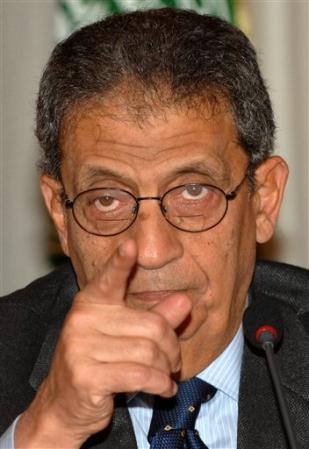 Arab League (AL) Secretary-General Amr Moussa Saturday said that the Arab mediation for Lebanese political crisis will continue and warned against more escalation, the Lebanese Broadcasting Corp. TV reported. "I can not say that the Arab initiative to solve the Lebanese crisis was a success nor I can say it was a failure, but I assure it will not stop," Moussa told reporters at a news conference held in Lebanese government offices.
Arab League (AL) Secretary-General Amr Moussa Saturday said that the Arab mediation for Lebanese political crisis will continue and warned against more escalation, the Lebanese Broadcasting Corp. TV reported. "I can not say that the Arab initiative to solve the Lebanese crisis was a success nor I can say it was a failure, but I assure it will not stop," Moussa told reporters at a news conference held in Lebanese government offices. 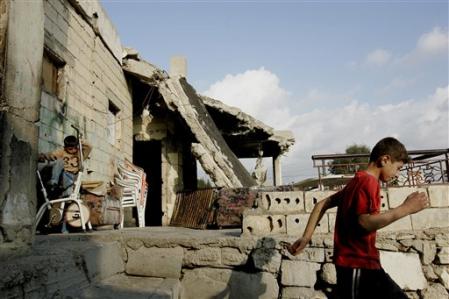 BEIRUT, 24 December (IRIN) – The lack of centralised, detailed development-related data in Lebanon has hampered the efficiency of emergency and rehabilitation efforts, humanitarian experts have said. "Information has been poorly coordinated, and although you can access, for instance, statistics on a given town or village via the municipality, there is no central mechanism to provide a global view of the different projects going on in Lebanon at any given time," said Rabih Bashour, coordinator for the relief and reconstruction committee at local NGO Al-Huda Society for Social Care.
BEIRUT, 24 December (IRIN) – The lack of centralised, detailed development-related data in Lebanon has hampered the efficiency of emergency and rehabilitation efforts, humanitarian experts have said. "Information has been poorly coordinated, and although you can access, for instance, statistics on a given town or village via the municipality, there is no central mechanism to provide a global view of the different projects going on in Lebanon at any given time," said Rabih Bashour, coordinator for the relief and reconstruction committee at local NGO Al-Huda Society for Social Care.  Daily Star , BEIRUT: "Dialogue is the most important thing for Lebanon today," boomed the voice of late MP Gebran Tueni, recorded more than a year ago and aired Sunday at a conference commemorating the slain journalist’s life and media freedoms in the Arab world. For a few brief moments Sunday, the MP and An-Nahar general manager came back to life in front of print journalists gathered to mark the first anniversary of his December 12, 2005 assassination in a car bombing.
Daily Star , BEIRUT: "Dialogue is the most important thing for Lebanon today," boomed the voice of late MP Gebran Tueni, recorded more than a year ago and aired Sunday at a conference commemorating the slain journalist’s life and media freedoms in the Arab world. For a few brief moments Sunday, the MP and An-Nahar general manager came back to life in front of print journalists gathered to mark the first anniversary of his December 12, 2005 assassination in a car bombing. 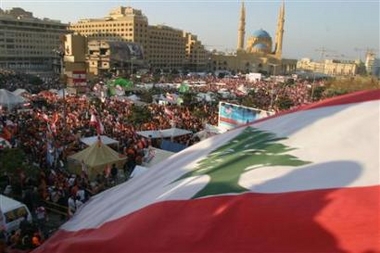 Al-Jazeerah, December 10, 2006 The Lebanese opposition composed of supporters of Hizbullah, Amal, Michel Awn, Franjiyeh, and Talal Arslan staged their largest protest ever. Lebanese army officers estimated it as hundreds of thousands filling Riyadh Al-Sulh Square, Martyrs Square, and nearby streets, bringing Beirut to a standstill.
Al-Jazeerah, December 10, 2006 The Lebanese opposition composed of supporters of Hizbullah, Amal, Michel Awn, Franjiyeh, and Talal Arslan staged their largest protest ever. Lebanese army officers estimated it as hundreds of thousands filling Riyadh Al-Sulh Square, Martyrs Square, and nearby streets, bringing Beirut to a standstill. Rome, Dec. 11, 2006 (CWNews.com) – Pope Benedict XVI voiced his concerns about the Middle East, and particularly about Lebanon, during his Angelus audience on Sunday, December 10. Speaking to large crowd of about 40,000 people in St. Peter
Rome, Dec. 11, 2006 (CWNews.com) – Pope Benedict XVI voiced his concerns about the Middle East, and particularly about Lebanon, during his Angelus audience on Sunday, December 10. Speaking to large crowd of about 40,000 people in St. Peter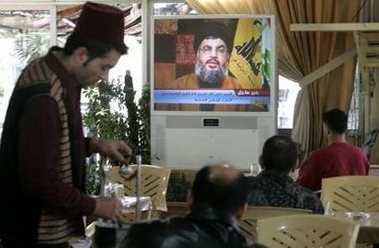 By Anthony Shadid, Washington Post, Two of Lebanon’s most powerful television stations played to their crowd. Future Television, loyal to Hariri and his Sunni constituency, devoted extensive coverage to the counterprotests in Tripoli. Hezbollah’s Al-Manar, calling the protests in Beirut “an unprecedented popular flood,” aired four scenes simultaneously of the crowds surging downtown. The broadcast was laced with the vocabulary of the summer war with Israel: victory, steadfastness and salvation.“People who survived 33 days of war in the south have no problem staying here for a year, or even two,” said Nada Mroueh, joining protesters flying flags that denoted their affiliation — yellow for Hezbollah, orange for Aoun, green for Amal. “Is it wrong to ask for our rights? Is Siniora more Lebanese than us? We are Lebanese, too.”
By Anthony Shadid, Washington Post, Two of Lebanon’s most powerful television stations played to their crowd. Future Television, loyal to Hariri and his Sunni constituency, devoted extensive coverage to the counterprotests in Tripoli. Hezbollah’s Al-Manar, calling the protests in Beirut “an unprecedented popular flood,” aired four scenes simultaneously of the crowds surging downtown. The broadcast was laced with the vocabulary of the summer war with Israel: victory, steadfastness and salvation.“People who survived 33 days of war in the south have no problem staying here for a year, or even two,” said Nada Mroueh, joining protesters flying flags that denoted their affiliation — yellow for Hezbollah, orange for Aoun, green for Amal. “Is it wrong to ask for our rights? Is Siniora more Lebanese than us? We are Lebanese, too.”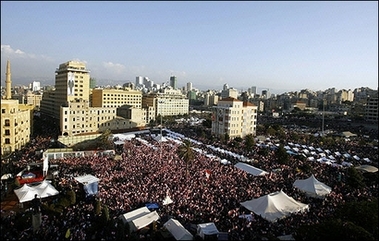 BEIRUT (AFP) – Lebanon’s divided factions are aiming for a political compromise after mass protests led by the opposition overwhelmed Beirut and raised fears of a return to civil strife. The protracted deadlock has paralyzed the government, opposition have clogged the capital in an escalating campaign to force a new national unity administration.
BEIRUT (AFP) – Lebanon’s divided factions are aiming for a political compromise after mass protests led by the opposition overwhelmed Beirut and raised fears of a return to civil strife. The protracted deadlock has paralyzed the government, opposition have clogged the capital in an escalating campaign to force a new national unity administration.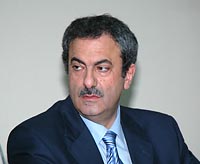 Magazine entretien Farid Elias el Khazen
Magazine entretien Farid Elias el Khazen 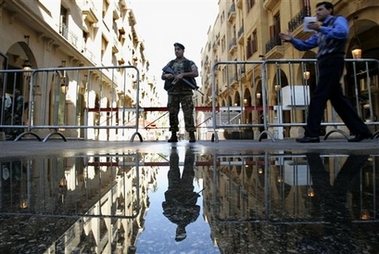 by Nayla Razzouk,
by Nayla Razzouk, 


